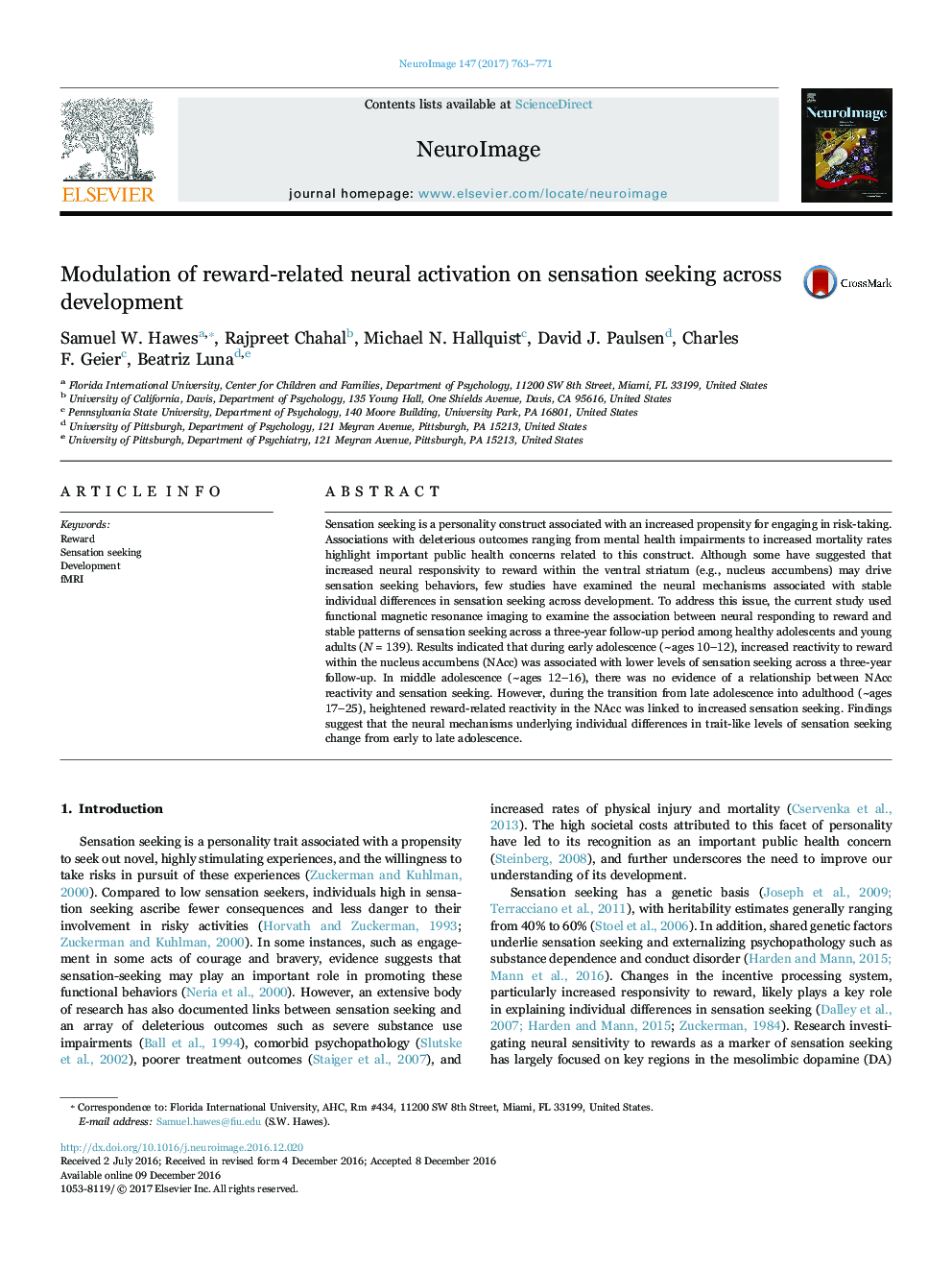| Article ID | Journal | Published Year | Pages | File Type |
|---|---|---|---|---|
| 5631542 | NeuroImage | 2017 | 9 Pages |
â¢The influence of neural mechanisms on sensation seeking changes across development.â¢NAcc reactivity at earlier ages (10-12 yrs.) was linked to decreased sensation seeking.â¢NAcc reactivity in later development (17-25 yrs.) was linked to increased sensation seeking.
Sensation seeking is a personality construct associated with an increased propensity for engaging in risk-taking. Associations with deleterious outcomes ranging from mental health impairments to increased mortality rates highlight important public health concerns related to this construct. Although some have suggested that increased neural responsivity to reward within the ventral striatum (e.g., nucleus accumbens) may drive sensation seeking behaviors, few studies have examined the neural mechanisms associated with stable individual differences in sensation seeking across development. To address this issue, the current study used functional magnetic resonance imaging to examine the association between neural responding to reward and stable patterns of sensation seeking across a three-year follow-up period among healthy adolescents and young adults (N = 139). Results indicated that during early adolescence (~ages 10-12), increased reactivity to reward within the nucleus accumbens (NAcc) was associated with lower levels of sensation seeking across a three-year follow-up. In middle adolescence (~ages 12-16), there was no evidence of a relationship between NAcc reactivity and sensation seeking. However, during the transition from late adolescence into adulthood (~ages 17-25), heightened reward-related reactivity in the NAcc was linked to increased sensation seeking. Findings suggest that the neural mechanisms underlying individual differences in trait-like levels of sensation seeking change from early to late adolescence.
